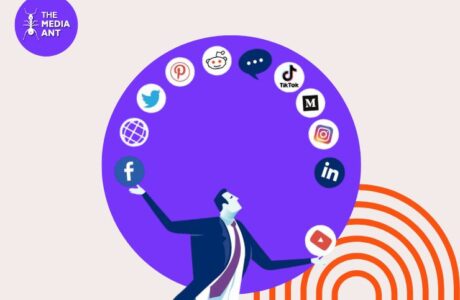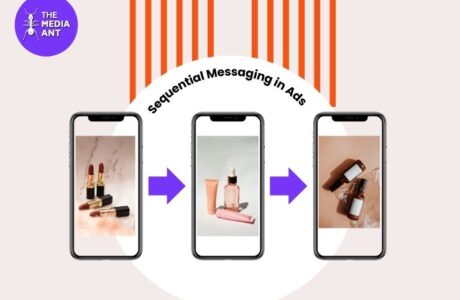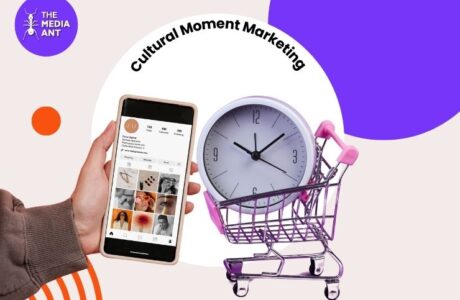Welcome to the Future of Marketing! 2024 is here, and with it comes a fresh wave of outbound marketing techniques. Gone are the days of one-size-fits-all campaigns. Step into the future with our Ultimate Outbound Marketing Guide for 2024 and explore the innovative strategies that are reshaping the marketing landscape. Ready to be ahead of the curve? Dive in!
What is Outbound Marketing?
Outbound marketing, often referred to as traditional marketing involves reaching out to potential customers through various channels, even if they haven’t expressed an interest in your product or service. Unlike inbound marketing, where customers come to you, outbound marketing is about pushing your message out to a broader audience. This approach includes tactics like cold calling, Televison and radio ads, direct mail, and more.
What is B2B Outbound Marketing?
B2B (Business-to-Business) outbound marketing specifically targets other businesses rather than individual consumers. The goal is to promote products or services that other companies might find beneficial. Given the nature of B2B transactions, it often involves higher stakes, longer sales cycles, and multiple decision-makers and the strategies employed in B2B outbound marketing are more tailored, research-intensive, and relationship-driven.
Why is Outbound Marketing Important?
1. Broad Reach
Outbound marketing allows businesses to reach a vast audience, including those who might not be actively looking for their products or services.
2. Immediate Impact
Unlike inbound strategies that take time to gain traction, outbound tactics like TV ads can create instant awareness.
3. Control Over Message
‘Companies have complete control over the content, timing, and medium, ensuring that the brand message remains consistent.’Companies have complete control over the content, timing, and medium, ensuring that the brand message remains consistent.
4. Targeted Approach
‘With advanced data analytics, businesses can now target their outbound efforts more precisely than ever, ensuring better ROI.’With advanced data analytics, businesses can now target their outbound efforts more precisely than ever, ensuring better ROI.
Types of Outbound Marketing

Outbound marketing, often characterized by its proactive approach to reaching potential customers, encompasses a diverse range of tactics designed to broadcast a message to a broad audience.
1. Television and Radio Ads
Even in our digital age, television and radio advertisements remain potent tools in the outbound marketing arsenal. These mediums offer a unique blend of visual and auditory storytelling, allowing brands to craft compelling narratives that resonate with a wide audience. Given their reach, especially in local markets, TV and radio ads can create immediate brand awareness and drive quick consumer action.
2. Cold Calls
While sometimes viewed with skepticism, cold calling, when executed strategically, can be a powerful tool. It involves reaching out directly to potential customers over the phone. The success of cold calling hinges on thorough research, understanding the recipient’s needs, and offering genuine solutions. It’s a direct and personal approach that, when done empathetically, can lead to meaningful business relationships.
3. Direct Mail
In a world dominated by digital communications, there’s still something uniquely impactful about receiving a physical piece of mail. Direct mail campaigns, which include postcards, catalogs, and flyers, offer a tactile experience for the recipient. They can be personalized and are often perceived as more genuine than digital ads, especially when they provide tangible value or incentives.
4. Trade Shows and Seminars
These events provide businesses with an opportunity for face-to-face interactions, which are invaluable in building trust and understanding. Trade shows allow companies to showcase their products or services, gather immediate feedback, and establish connections that can lead to long-term partnerships. Seminars, on the other hand, position a company or its representatives as thought leaders in their industry, fostering credibility and trust.
5. Print Ads
Despite the decline in print media consumption, print advertisements in newspapers, magazines, and brochures still hold significant value in certain sectors and demographics. They offer permanence and tangibility, qualities often absent in fleeting digital ads. Well-designed print ads can capture attention, evoke emotion, and drive action, especially when they’re placed in niche publications that cater to specific target audiences.
Difference between Outbound Marketing and Inbound Marketing

| Particulars | Outbound Marketing | Inbound Marketing |
| Definition and Approach | Often termed as “push” marketing, outbound marketing is a traditional form of marketing where companies initiate the conversation by sending out their message to a broad audience. It’s about pushing the product or service to potential customers. | This is often referred to as “pull” marketing. Inbound marketing is about creating valuable content tailored to potential customers and drawing them in. Instead of reaching out to consumers, businesses create reasons for consumers to come to them. |
| Direction of Communication | The company reaches out to the consumer. The communication is typically one-way. | The consumer seeks out the company, usually driven by an interest in the content or a specific solution. The communication is often two-way, with consumers actively engaging with the content or platform. |
| Target Audience | Targets a broader audience, which might include individuals not necessarily interested in the product or service. | Focuses on attracting individuals already interested in the industry or niche. It’s more about quality leads than quantity |
| Methods and Tactics | Includes tactics like TV and radio ads, cold calls, direct mail, and billboards. | Relies on methods like content marketing (blogs, videos, eBooks), search engine optimization (SEO), social media marketing, and webinars |
| Cost Implications | Can be more expensive due to costs associated with ad placements, production, and broad targeting | While often less expensive in terms of direct costs, it requires consistent effort, time, and sometimes long-term investment to see substantial results |
| Feedback and Metrics | Feedback might come in the form of direct sales, customer inquiries, or through market research. Metrics might include reach, frequency, and overall sales. | Offers a quicker feedback loop through online engagements like comments, shares, website traffic, and conversion rates. Metrics often include page views, click-through rates, and social shares |
| Control and Flexibility | Companies have more control over the message and its presentation but might have less flexibility once a campaign is launched. | Offers more flexibility as content can be tweaked based on real-time feedback, but the message might evolve based on audience engagement and feedback. |
Outbound Marketing Strategy

Outbound marketing, often dubbed “traditional marketing,” is a proactive approach where businesses reach out to potential customers, rather than waiting for them to come knocking. While the essence of outbound marketing remains consistent, the strategies have evolved with technological advancements and changing consumer behaviors. Let’s delve deeper into the intricacies of an effective outbound marketing strategy.
1. Research
Before any marketing campaign, understanding your target audience is paramount. This involves:
Demographic Analysis: Age, gender, location, income, and other demographic factors can significantly influence buying decisions.
Psychographic Analysis: This delves into the interests, behaviors, and values of your potential customers.
Competitive Analysis: Understanding what your competitors are doing can offer insights into market gaps and opportunities.
2. Crafting the Message
Your message is the core of your marketing efforts. It should be:
Clear: Avoid jargons and ensure that the audience understands the value proposition immediately.
Compelling: It should evoke a reaction, whether it’s curiosity, desire, or a sense of urgency.
Consistent: Across all channels, the message should remain consistent to avoid confusing potential customers.
3. Channel Selection
Different audiences have different preferences. Selecting the right channel is about understanding where your potential customers are and how they like to receive information.
Traditional Media: TV, radio, and print might be more effective for older demographics or specific localities.
Digital Platforms: Online ads, social media platforms, and email marketing cater to a more tech-savvy audience.
Events and Trade Shows: Direct interactions can be invaluable for B2B businesses or industries where trust plays a significant role.
4. Minimizing Risks, Maximizing Returns
Before committing significant resources, it’s wise to test your strategy.
Pilot Campaigns: Launch smaller campaigns to gauge audience reactions.
A/B Testing: Especially in digital ads and email marketing, testing different versions can offer insights into what resonates best.
Feedback Collection: Direct feedback from a test audience can provide actionable insights.
5. Analysis
No marketing strategy is complete without a thorough analysis.
Key Performance Indicators (KPIs): Set clear metrics, whether it’s sales numbers, lead generation, or brand awareness levels.
Data Analytics Tools: Use modern tools to gather data on campaign performance.
Iterative Process: Based on the analysis, refine and adjust your strategy for better results in subsequent campaigns.
6. Relationship Building
Outbound marketing doesn’t end with the first sale or interaction.
Follow-ups: Especially in B2B marketing, nurturing leads through follow-ups can lead to more significant contracts or partnerships.
Loyalty Programs: Encourage repeat business and referrals through loyalty programs or incentives.
Feedback Loops: Create channels where customers can provide feedback, ensuring that they feel heard and valued.
Outbound Marketing Channels

The channels used in outbound marketing are diverse, each offering unique advantages and catering to different audience segments. Let’s delve deeper into these channels, understanding their nuances and potential in the modern marketing landscape.
1. Digital Ads
Overview: Digital ads encompass a wide range of online advertising formats, from banner ads on websites to video ads on YouTube.
Advantages: They offer precise targeting options based on demographics, interests, and online behavior. With real-time analytics, marketers can quickly gauge the effectiveness of their campaigns and adjust accordingly.
Platforms: Google Ads, Facebook Ads, Instagram Ads, LinkedIn Ads, and programmatic advertising platforms.
2. Email Marketing
Overview: This involves sending direct emails to potential or existing customers. It can range from promotional campaigns, newsletters, to personalized product recommendations.
Advantages: Email marketing boasts one of the highest ROI among marketing channels. With segmentation, businesses can tailor their messages to specific audience groups, increasing relevance and conversion rates.
Tools: Platforms like Mailchimp, SendinBlue, and HubSpot offer sophisticated email marketing capabilities.
3. SMS Marketing
Overview: SMS marketing involves sending promotional messages directly to a user’s mobile phone.
Advantages: SMS messages have an exceptionally high open rate, often exceeding 90%. This immediacy ensures that time-sensitive promotions or alerts are seen.
It’s crucial to obtain explicit consent before sending SMS messages to avoid legal issues and to ensure you’re not intruding on the recipient’s privacy.
4. Billboards and Outdoor Advertising:
Overview: This traditional form of advertising involves placing ads in physical locations, from massive billboards on highways to posters in subway stations.
Advantages: They offer high visibility, especially in strategic locations with heavy foot or vehicle traffic. They’re excellent for brand awareness campaigns.
The upfront costs can be high, and measuring direct ROI can be challenging compared to digital channels.
5. Webinars and Online Events:
Overview: Especially prevalent in the B2B sector, webinars are online seminars or workshops. They can be live, pre-recorded, or a mix of both.
Advantages: Webinars position a company as a thought leader in its industry. They also offer a platform for direct interaction with potential clients or customers, fostering trust and relationship-building.
Tools: Platforms like Zoom, GoToWebinar, and Webex facilitate the hosting of webinars.
6. Telemarketing
Overview: This involves reaching out to potential customers directly over the phone. It can be scripted or more conversational, depending on the strategy.
Advantages: Direct human interaction can address queries, objections, and build rapport in real-time.
It’s essential to maintain a database and ensure compliance with regulations like the Do Not Call registry.
7. Direct Mail
Overview: This involves sending physical promotional materials, such as postcards, catalogs, or brochures, directly to potential customers.
Advantages: The tangible nature of direct mail can leave a lasting impression. It’s especially effective for local businesses targeting a specific geographic area.
Printing and postage costs can add up, so it’s essential to ensure the campaign is well-targeted to maximize ROI.
Outbound Marketing Examples
1. Amul – The Taste of India
Type: Print Ads, Billboards
Amul’s topical ads, featuring the iconic Amul girl, have been a staple in Indian advertising for decades. These ads comment on current events, movies, politics, and more, always with a humorous twist.
2. Vodafone – ZooZoos
Type: Television Commercials
Vodafone’s ZooZoos, white creatures with ballooned bodies and egg heads, became an instant hit during the IPL cricket season. These ads showcased various Vodafone services with the ZooZoos enacting relatable scenarios.
3. Fevicol – “Mazboot Jod”
Type: Television Commercials
Fevicol, an adhesive brand, is known for its quirky commercials that emphasize the strength of its product. One iconic ad showed a crowded bus journey, with people sticking together, emphasizing the adhesive’s strength.
4. Cadbury Dairy Milk – “Kuch Khaas Hai”
Type: Television Commercials
Cadbury transformed the perception of chocolate from being a kids’ treat to something that adults could enjoy. Their ads, often set to the tune of “Kuch Khaas Hai,” showcased joyous moments celebrated with a bar of Dairy Milk.
FAQs on Outbound Marketing
What is outbound marketing examples?
Outbound marketing involves proactive outreach to potential customers. Examples include TV and radio ads, cold calls, direct mail, billboards, and telemarketing.
What is inbound and outbound marketing?
Inbound marketing attracts customers through content, SEO, and social media, letting them come to you. Outbound marketing, on the other hand, involves directly reaching out to potential customers through methods like ads and cold calls.
What is the role of outbound marketing?
The role of outbound marketing is to proactively promote a product or service to a broad audience, create brand awareness, and generate leads or sales through direct outreach methods.
What is outbound marketing also known as?
Outbound marketing is also known as “Push marketing” because it pushes messages to people, often interrupting their current activities.
What are 3 advantages of outbound marketing?
Three advantages of outbound marketing are: 1) Immediate reach and impact, 2) Precise targeting capabilities, and 3) Complete control over the message and its delivery.





